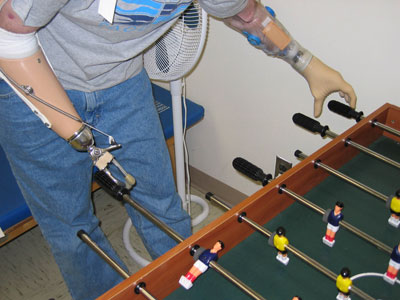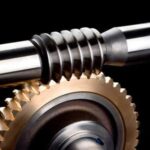Humans are seen by the Biomechatronics science as a set of systems all related and working together. Learn about the Human Motor Control System, Affected Human Motor Control, and Assistive Motor Control Systems. This is the second article of the series of a new exciting field known as Biomechatronic
The whole field of Biomechatronics is based on understanding the human body as a system, a dynamic system, made of different systems interrelated and working all together so as to function perfectly and in harmony. More specifically, the human motor system is made of the mechanics, actuation, sensing and control systems all working together.
When impairment occurs an assistive system can be designed so as to help restore lost mobility capability. This assistive system must interact with the human motor system so as to exchange information to help better control. This interaction between the assistive systems with the physiology of the human body is at the core of the study of Biomechatronics.
A basic capability of the human body is its ability to move itself and to move its extremities in a controlled manner. This capability allows the body to move around and to handle objects in an appropriate manner.
The human body has various systems that contribute to the Human Motor Control. The Central Nervous System is a complex structure hierarchical controller. Muscles of the human body are the motors by which the skeleton and some external load can be moved and controlled. The muscles and the skeleton-load are dynamically coupled system that exchange energy and information. According to Sinkjaer (1997), these systems together form a complex motor control system with nonlinear and time variant characteristics.
Affected Human Motor Control
When a disease or a traumatic accident occurs the human motor control system may be affected. Sometimes the Central Nervous System is affected such as in a spinal cord injury, Central Vascular Accident (CVA), Cerebral Palsy (CP). Sometimes, it is the wiring of the system which is impaired (Multiple Sclerosis) or the muscle actuators(muscular dystrophy). These and many others diseases or accidents may cause disabilities (not being able to perform as before).
Assistive Motor Control Systems
Prosthetic systems can be used to help people with affected human motor control system. These may help people with disabilities and handicaps to overcome or reduce them. Prosthetic systems can be built to assist the affected human motor control system.
General speaking, these Assistive Motor Control Systems (AMCS) can be defined as artificial control systems including and may include controllers, actuators, mechanics (prosthetic components) and sensors. The AMCS system will operate in parallel to the affected physiological motor control system. Depending on the impairment, both systems (the physiological and the AMCS) may interact in several ways.
Sources:
Sinkjaer T (1997): Muscle, reflex and central components in the control of the ankle
joint in healthy and spastic man. Acta Neurologica Scandinavica 96: 1-28.
World Health Organization (1980): International Classification of Impairments, Disabilities and Handicaps. Geneva.
BIOMECHATRONICS LESSONS: CONCEPTS AND APPLICATIONS
Learn about Biomechatronics, a new field of mechanical engineering. Biomechatronics deals with the interaction between human organs and mechanoelectrical devices.


